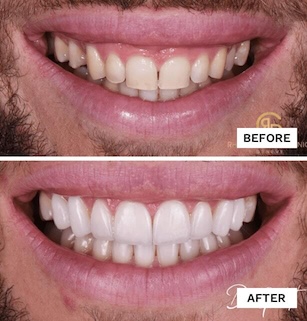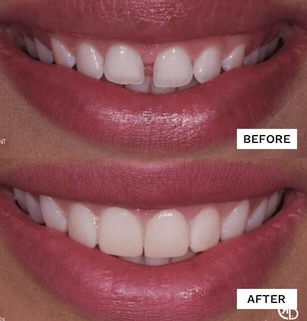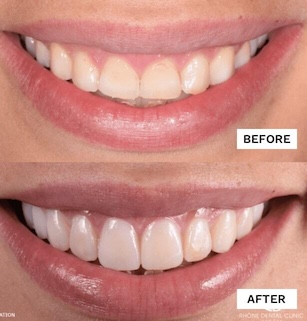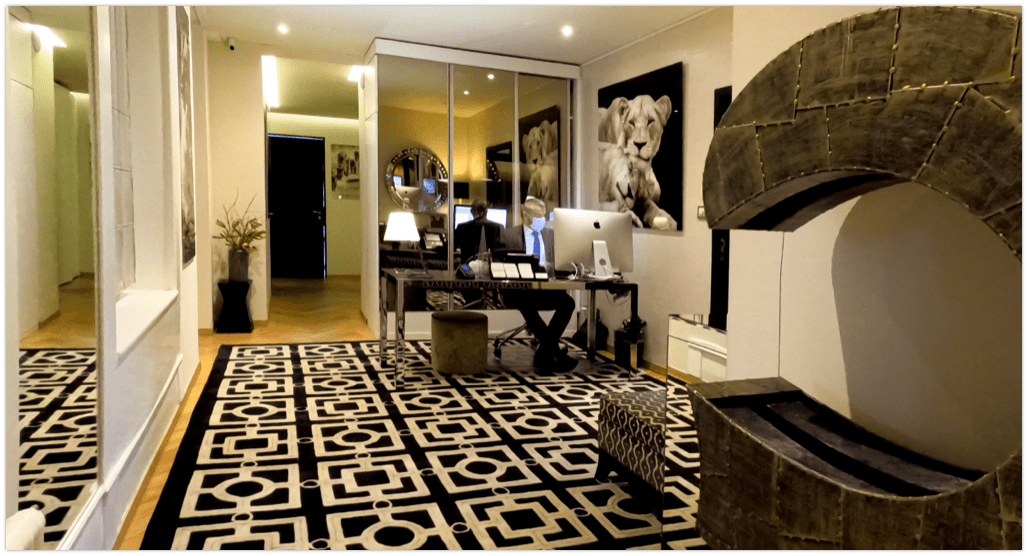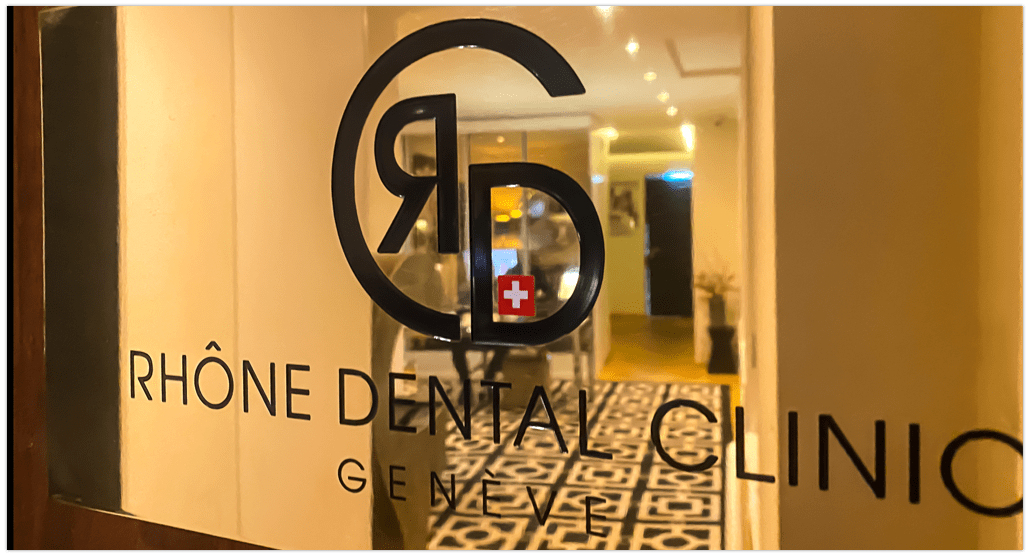Dental veneers
Dental veneers in our Geneva clinic
A veneer is a thin prosthetic device bonded to the enamel and designed to change the colour, structure, position and shape of the original tooth.
They allow us to restore the aesthetic appearance of a healthy, young and bright tooth while preserving the original living tissue as much as possible.
Our dental practice in Geneva adapts to the most demanding schedules and private requirements of each patient. We guarantee a strict punctuality and offer an emergency service in case of necessity.
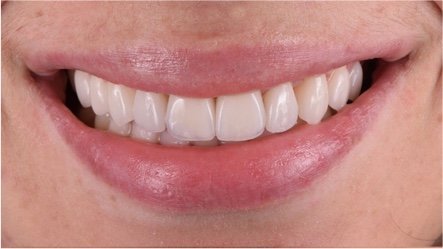
Key number
veneers fitted since the creation of Rhône Dental Laboratoire!
Veneers made in our dental laboratory
The complementarity of the doctor and the dental technician is the key to the quality of a veneer application, which is why we produce veneers in our own laboratory.
The real key to the quality of a veneer lies in its natural transparency and the study of all the functions that will define the longevity of the veneers.
The fitting of veneers is entirely linked to the knowledge and experience of the dentist, who will limit the polishing of living teeth as much as possible, and that of our ceramists, who are capable of creating extremely fine surfaces (0.4 mm) with all the subtlety of the gradations of translucency of the natural shine. This complementarity, a true team effort, guarantees the patient the success of the effective treatment plan.
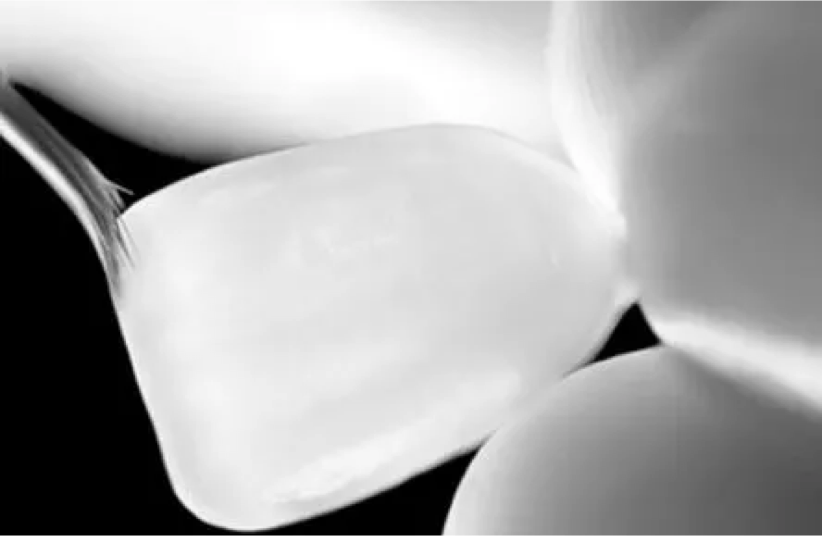
1. Dental veneers: definition
These are ceramic films designed to be painlessly applied to the tooth surface, improving the aesthetic appearance of the tooth (shape, color, alignment). In general, treatment is requested by those wishing to correct certain imperfections caused by yellowing enamel or chipped teeth, but also in cases of malpositioned teeth or diastemas, i.e. excessive distance between the incisors. So, ultimately, dental veneers can be used not only to modify the appearance of the tooth, but also to remedy any problem arising from dental malocclusion.
After dental veneers have been fitted at the dentist’s, the aesthetic result is incredible. The patient is left with a beautiful smile.
2. Classification of types of indications
Our therapeutic approach is gradual and consists of responding to an aesthetic request by always proposing the least invasive treatment first.
The classification of the types of indications is linked to their etiology (study of the causes and factors of a disease). The most commonly used classification is that of the Magne brothers and Urs Belser, which defines the following 4 main types of treatment :
Type 1 : Color correction
Types 1a : Tetracycline staining of grades 3 and 4.
This discolouration, which appears as diffuse bands of variable width, may be related to antibiotics taken during pregnancy, mineralisation of the temporary incisors or may occur in children up to the age of 8 (mineralisation of the crown of the 2nd permanent molar).
Type 1b : Teeth refractory to external bleaching.
When less invasive treatments, based on micro-abrasion or lightening, do not lead to a satisfactory result, veneers are indicated. Fluorosis type 3 (with porosity) As with tetracyclines, an overdose of fluoride between the 4th month of pregnancy and in children up to 8 years of age leads to an alteration in the metabolism of the ameloblasts (cells used to manufacture enamel) which can cause the appearance of whitish veils and stains as well as brown discolouration.
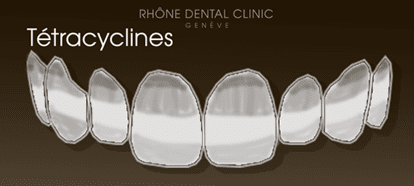
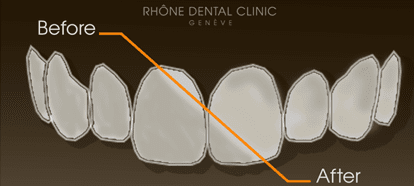
Type 2 : Form correction
Type 2a : Conoidal teeth
Conoidal (or riziform, rice-shaped) teeth are genetically based shape anomalies that most often affect the upper lateral incisors.
Type 2b : Closure of interdental spaces
Veneers may be recommended to close central diastemas and gingival black triangles. Direct composite restorations are then considered as a first step. However, it is more difficult to control the shape, emergence profile and cervical adaptation with direct than with indirect methods.
Type 2c : Short free edge lengthening
Direct composite restorations, extended along the entire incisal edge, can quickly show signs of mechanical fatigue and even complications ranging from chipping to fracture.
The permanent rehabilitation of wear, taking into account a consequent change in the height and shape of the tooth, represents a real technical challenge in the direct method.
The use of veneers makes it possible to obtain a more satisfactory result with fewer risks. In this indication, the prior analysis of the occlusal function is essential.
A distinction must be made between clinical contexts where the chemical component due to exogenous acidity (food) or endogenous acidity (gastro-oesophageal reflux, anorexia, bulimia) is the cause of dental tissue loss. In these cases, the conservative approach – of which veneers are a part – is to be preferred. But the solutions must be determined within the framework of a global and medical management. In particular, consideration must be given to the whole of the arches, and not only to the aesthetic aspect of the teeth.
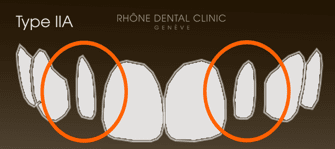
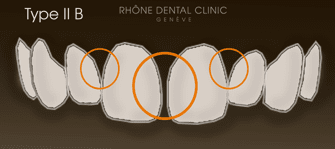
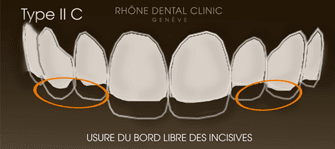
Type 3 : Structural anomaly
In these cases, the conservative approach, of which the veneer is a part, is a solution to be favoured but which must be part of a global and medical management. Moreover, the reflection must be focused on the whole of the arches and not only on the aesthetic sector.
An alternative to root canal treatment followed by a prosthetic crown is the creation of a veneer. When these traumas concern the young patient, a reasonable attitude consists in carrying out in the first instance a direct restoration in composite which will be resumed at the end of the adolescence if the aesthetic request is motivated.
Type 3a : Extensive enamel loss by erosion and/or wear
The rehabilitation of the smile in these clinical situations is complex. An alternative to peripheral crowns is to exploit the available enamel to make veneers.
Finally, such wear is often associated with bad habits that need to be identified and treated. This is often the case with abrasions due to traumatic brushing or acid attack erosions due to a diet rich in acidic foods and/or drinks.
Type 3b : Fluorosis type 3 (with porosity)
As with tetracyclines, an overdose of fluoride between the 4th month of pregnancy and in children up to 8 years of age leads to an alteration in the metabolism of the ameloblasts (cells used to make enamel), which can cause the appearance of whitish veils and stains as well as brown discolouration.
Type 3c : Congenital and acquired enamel defects
Amelogenesis imperfecta. This is a group of enamel developmental anomalies that is linked to a mutation in the gene coding for amelogenesis proteins or proteases.
In young children, the aesthetic management of permanent teeth must be done with a temporary solution in order to allow time for facial growth to position all the aesthetic determinants of the face.
During this transitional period, composite resin veneers can be a very interesting therapeutic option as they are not very invasive. As the bonding protocol is modified, the composition of this pathological enamel is different, and the risk of detachment must be considered increased in these patients, and they must be informed of this in order to put forward the obvious precautionary measures.
Type 3d : Porosity of enamel, stains on teeth, several colours on the same tooth
HMI (hypo mineralisation) is a qualitative enamel anomaly of systemic origin, preferentially affecting molars and permanent incisors.
The number of cases is increasing and may be caused by various environmental factors affecting enamel formation during the first three years of life. In the permanent incisors, they appear as whitish or yellow spots with variable aesthetic consequences depending on their size and location. Only the most severe forms can be treated with veneers.
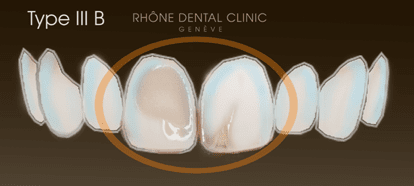
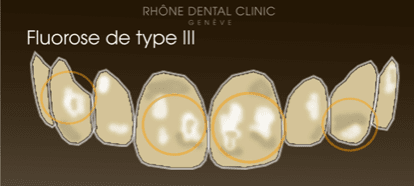
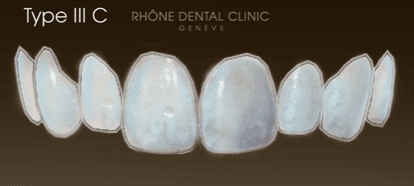
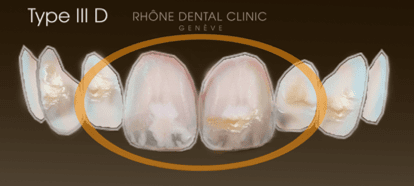
Type 4 : Perfect alignment, save time on orthodontics
The treatment of dental malpositions with veneers is certainly the most difficult and controversial indication! In particular, it requires comprehensive information on the possible orthodontic alternatives.
Consultation with one of our qualified specialists in dentofacial orthopaedics (ODF) must be systematic in order to respect the patient’s legal duty to inform. However, if the patient refuses the ortho treatment and/or if other anomalies (structure, shape, colour) coexist, it is possible to propose an alternative correcting slight malpositions with veneers.
While this treatment is more invasive, it has the advantage of correcting minor misalignments more quickly than ortho treatment. In just two weeks your smile can be perfectly aligned, the shape and colour will be that of your youth… This is called a dental lift. Veneers are a fast and effective alternative for those who want to regain a solid colour, more radiance and a harmonious arch in only 2 appointments. In short, an orthodontic programme can correct smiles with perfectly healthy and bright teeth within 6 to 9 months. When faced with a problem of tooth colour and volume, veneers offer an immediate aesthetic result.
3. Contraindications
Maloclussion
A situation in which a malocclusion is associated with high occlusal pressure contraindicates veneer treatment.
The same applies to an incisal or inverted butt joint, which may generate unfavourable occlusal forces, but this is not a formal contraindication.
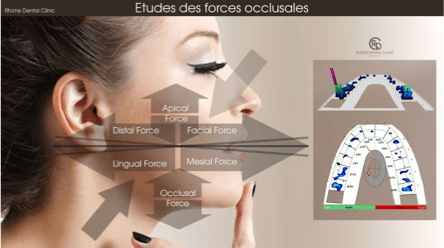
Bruxism
Bruxism is a para-functional situation in which the progressive wear of the posterior and anterior teeth requires therapeutic management. The patient is exposed to a risk of detachment or fracture (failure rate seven times higher).
When the occlusal constraints are judged reasonable or controlled, it is however imperative to complete the global rehabilitation with a night protection splint.
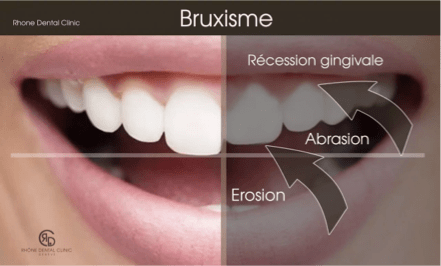
4. Are dental veneers painful?
Is it necessary to file the tooth to apply dental veneers?
No, it’s not absolutely necessary, especially if veneers are applied to increase the size of the tooth. In some cases, a slight filing of the tooth (2-3%) may be necessary to ensure an optimal, long-lasting result. However, some types of dental veneers are only 0.2 mm thick (the thickness of a contact lens), and do not require filing to be applied.
5. How long do dental veneers last?
Durability depends on the type of material from which the veneers are made and their thickness, which determines their strength. The main material used is ceramic or porcelain, but there are also veneers made from a material called composite, which is a mixture of pulverized porcelain and synthetic resin. Unlike porcelain and ceramic veneers, which can last up to twenty years minimum if properly maintained, composite veneers have a shorter lifespan but can be repaired, requiring periodic maintenance (the real benefit of this material is to reduce the cost to the patient and allow temporization until ceramic veneers).
Other factors influencing durability are the dentist’s expertise, the quality of the master ceramist (bonding and fitting) and the patient’s own care and maintenance of the veneers (regular visits to the hygienist and flossing just like your natural teeth).
6. How to care for veneers
To keep veneers in good condition, it’s important to follow certain dental care practices traditionally recommended by dentists. Good oral hygiene is certainly the basis of veneer maintenance, to eliminate food residues and counteract tartar build-up. Finally, don’t forget to have your teeth cleaned every six months to maintain the health of your teeth and gums with your dental hygienist.
Other factors influencing durability are the dentist’s expertise, the quality of the master ceramist (bonding and fitting) and the patient’s own care and maintenance of the veneers (regular visits to the hygienist and flossing exactly like your natural teeth).
Dental veneers restore the aesthetic appearance of healthy, young, bright teeth.
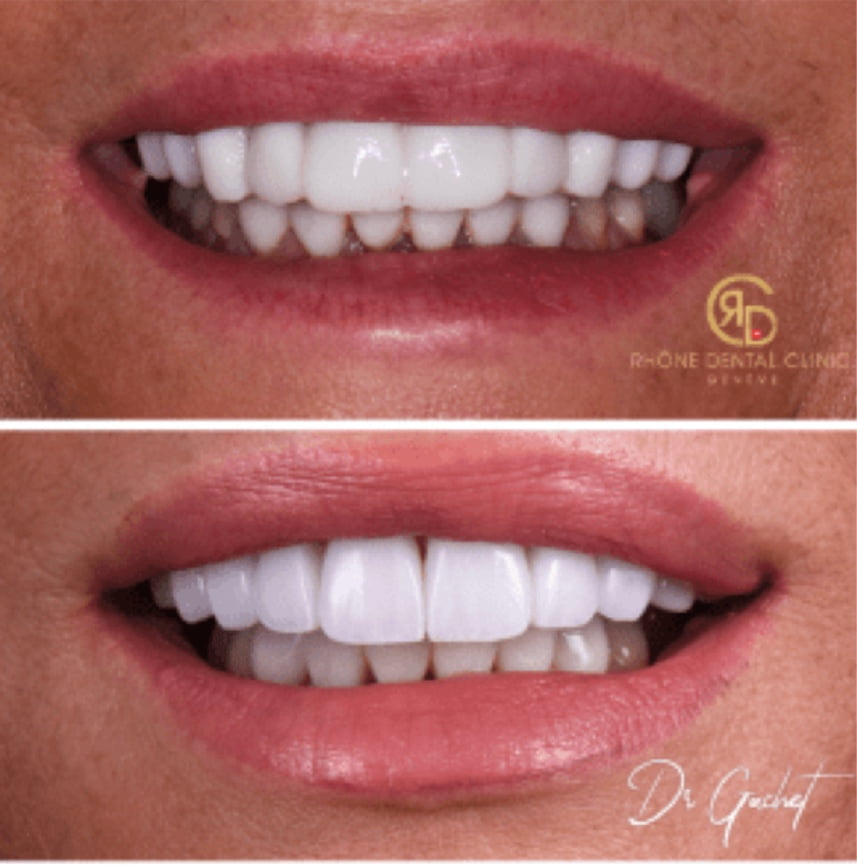
Want to find out more about ceramic dental veneers?
During your consultation, your particular situation will be discussed in more detail (we’ll take photos and videos). We encourage you to ask any questions you may have. If new questions arise after your consultation, don’t hesitate to contact the clinic. During the initial examination, we’ll be able to help you choose between the veneers that are right for you thanks to an esthetic simulation and our library of numerous completed cases. During this initial examination, we can define the treatment plan, the expected duration of treatment and the approximate cost. Drop into our dental clinic for a visit, or call us on 022 310 50 77 to arrange a consultation!
« At the Rhône Dental Clinic, we have produced more than 10,000 dental veneers from our own laboratory, with a guarantee of over 20 years! For me, it’s essential to understand that the aesthetics of ceramic dental veneers are inextricably linked to the quality and proximity of master ceramists. The refurbishment of our laboratory will enable you to see how your veneers are made and to discover our know-how, which is unique in Switzerland. »

7. Price of dental veneers
Our prices depend on the method used. Make an appointment with one of our specialists for a free quote.
8. Before and after veneers,
work carried out on our patients
Dental veneers, often made of resin or in the form of shells, are applied to the surface of teeth by specialized dentists. They are ideal for those seeking to improve the shape and appearance of their face, while gaining self-confidence. Prices vary, but a good dental plan can help keep costs down.
